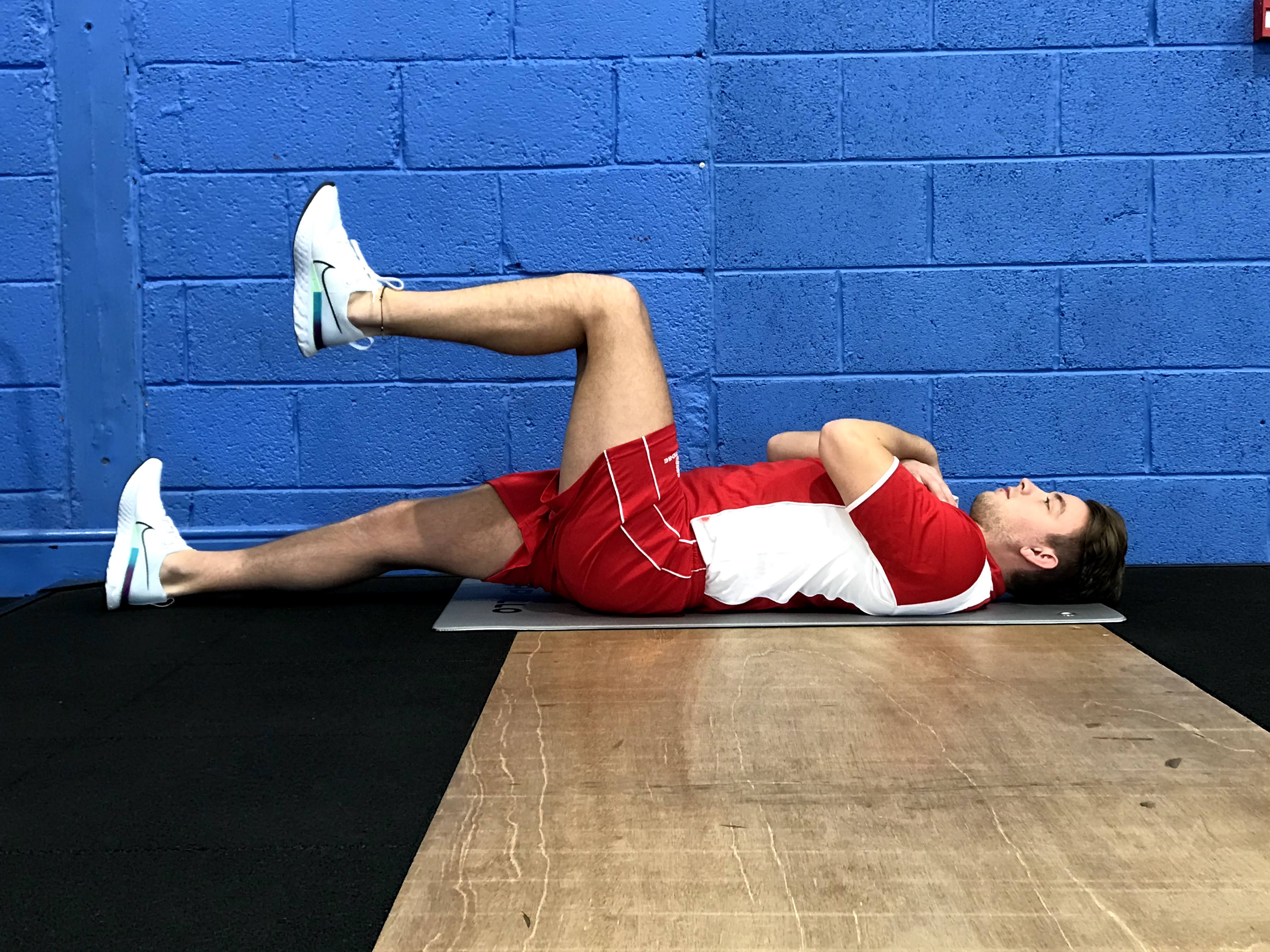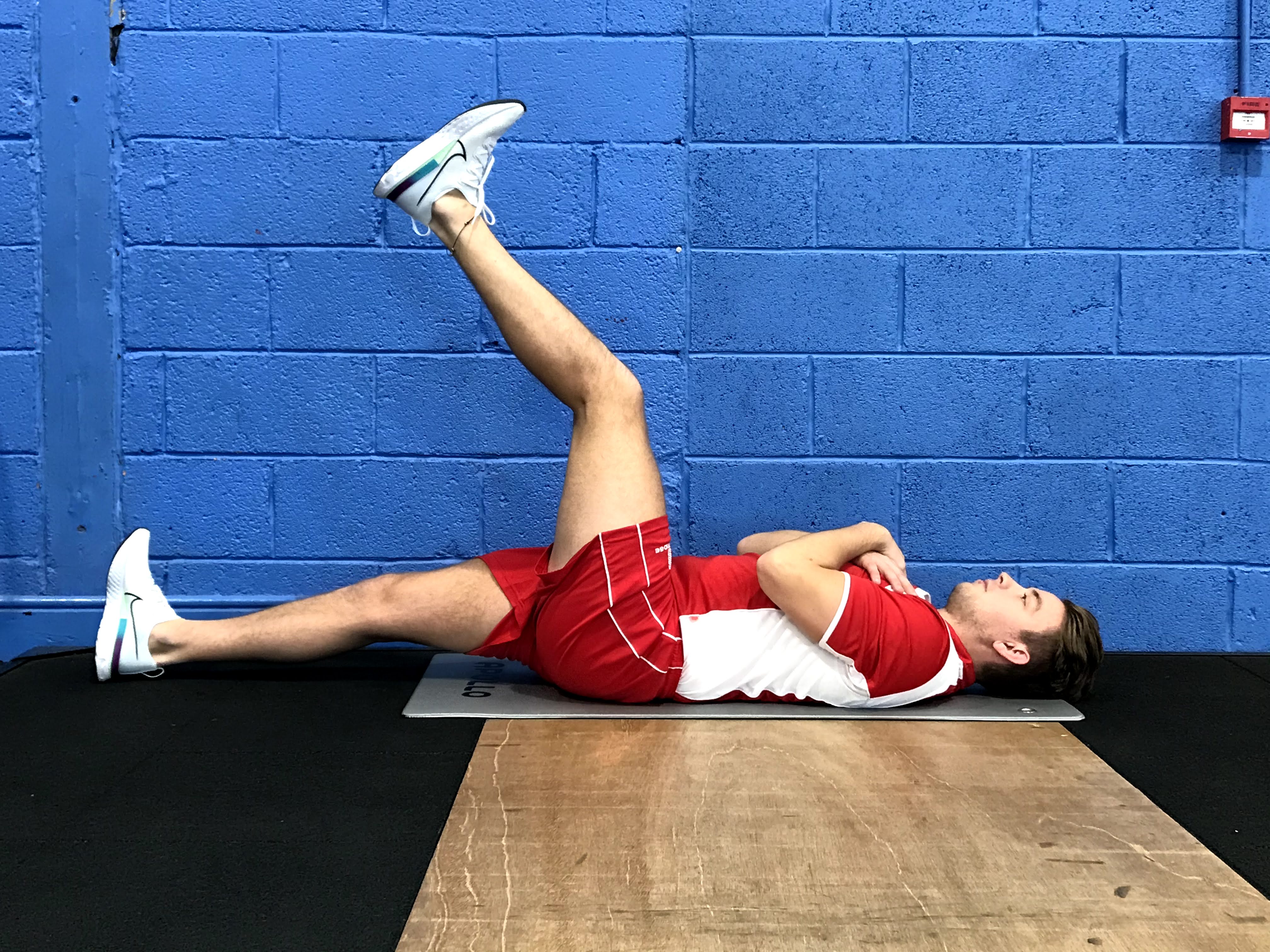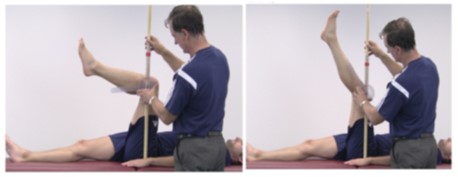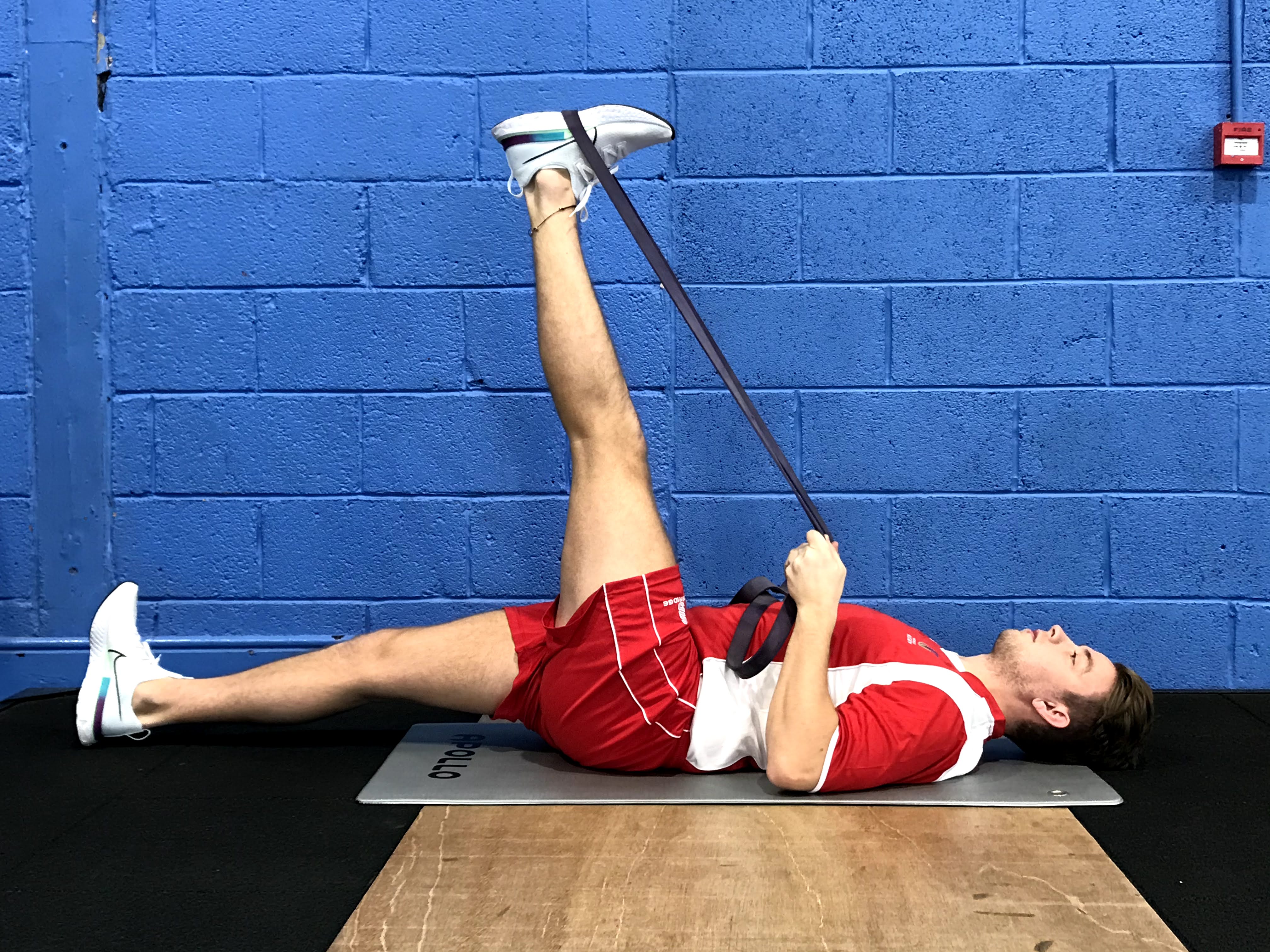The Hamstring Popliteal Test
Procedure
The hamstring popliteal test determines range of motion about the hip joint and the knee joint, targeting the hamstrings. To administer the hamstring popliteal test, the player lies supine, with the hip and knee flexed to 90 degrees. This is the starting position. This is illustrated in Figure 2a. From the start position, the player attempts to straighten the raised leg, without changing the position of the knee. This is illustrated in Figure 2b. The non-tested leg should be rested in a straight position. The angle completed at the fulcrum of the knee is then noted. In Figure 2b below, the angle completed is greater than 80 degrees. Note, attaining a ROM greater than 70 degrees is considered normal.
Figure 2a. The start Position for the Hamstring Popliteal test

Figure 2b. The finishing position and the angle achieved at the knee during the Hamstring Popliteal test

Note in Figure 2b that the player has slightly raised his rested leg from the floor thereby tilting the pelvis to a more accommodating position for what may be mistaken as a greater ROM about the knee. This is a common fault in completing this test and the coach must pay careful attention to the rested leg position.
In Figure 3 below we can see the administration of the hamstring popliteal test using a dowel and a goniometer to measure the joint angle. This facilitates the easy measurement of the popliteal angle. Within seconds, the coach can:
- ensure that the thigh is vertical
- describe the popliteal angle
- record the result on the test score sheet.
Figure 3. Coach administration of the test

The Evidence
While a history of a previous hamstring strain is a major risk for future hamstring strain, several other factors have been associated with hamstring strain including strength deficits within the eccentric and concentric contraction modes of the hamstring, imbalances between flexors and extensors (hamstrings and quadriceps), weak gluteals, pelvic instability and hamstring flexibility (Woods et al 2004). The latter’s role in hamstring strain is still relatively unclear. Nevertheless, a normal ROM about the knee and hip - as determined by the , facilitated by a normal hamstring ROM - is important for the player.
Corrective Exercises for Hamstring Popliteal test
This test can highlight a lack of flexibility in the hamstrings muscles. Some corrective exercises to help address this are as follows:
Lying hamstring stretch with band
- Player loops a band around the arch of one foot and then bends the knee of the other leg to keep the foot flat on the ground
- Lies back and uses the band to pull the straight leg up until they feel a stretch in the hamstring
- Holds for 30 seconds at a time and then changes legs
- They should not feel a stretch in the back of the knee. If they do then they should slightly bend the knee by a couple of degrees or lessen the stretch by lowering the leg.
Figure 4. Lying hamstring stretch with band

Foot on bench hamstring stretch
- Player places the heel of one foot up on a bench
- Slightly bends or unlocks the knee of the leg that is up on the bench
- Hinges at the hip and tries to bring their torso towards their leg until they feel a stretch in the hamstring
- Holds for 30 seconds and swap legs